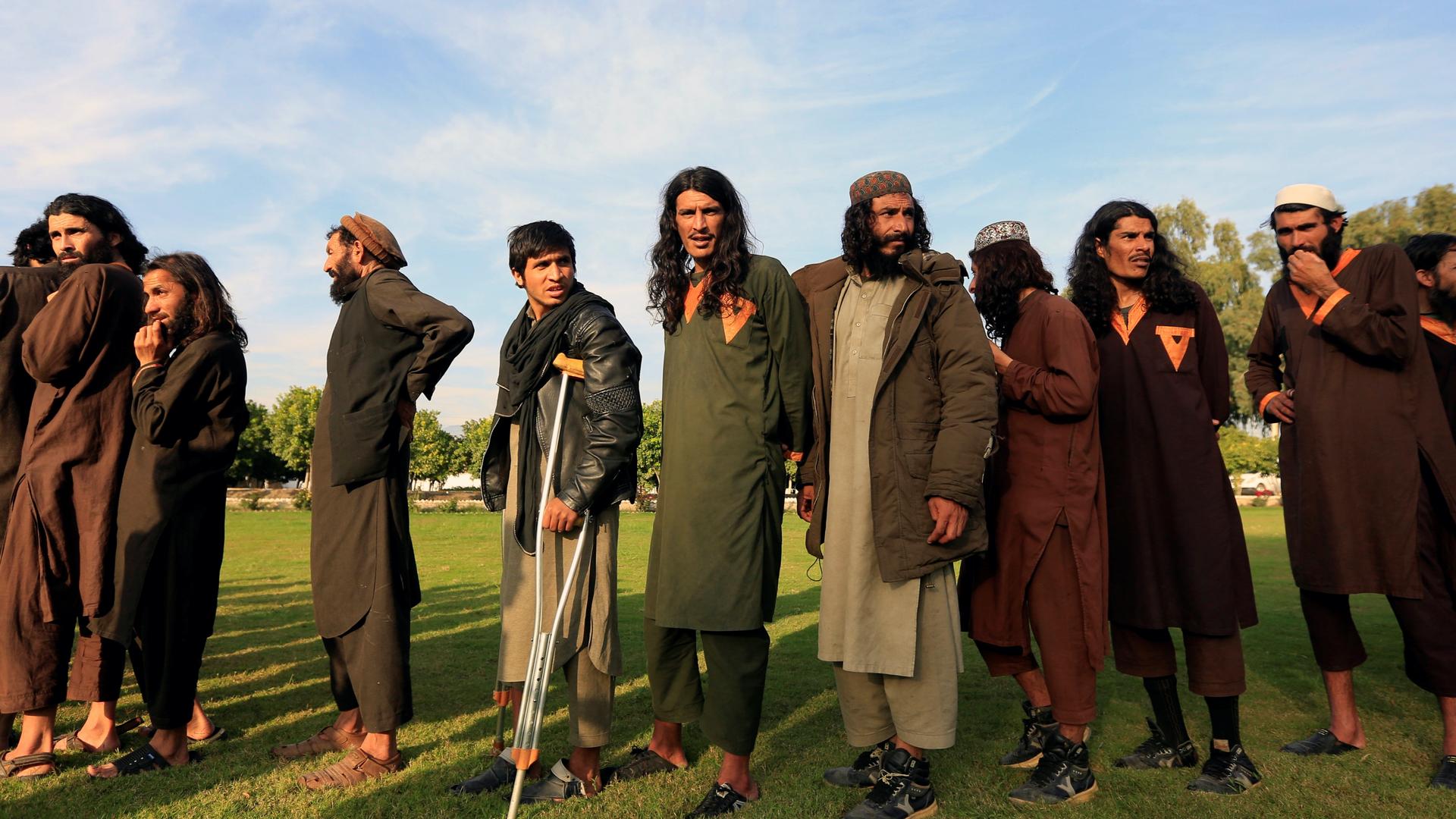It’s time for the US to rethink Huntington’s philosophy: Part II
ISIS militants who surrendered to the Afghan government are presented to media in Jalalabad, Nangarhar province, Afghanistan, Nov. 17, 2019.
This analysis was featured in Critical State, a weekly newsletter from The World and Inkstick Media. Subscribe here.
In the last edition of Deep Dive, Critical State dug into recent reevaluations of Samuel Huntington’s legacy by learning how poorly his best-regarded work — which created the framework on which post-World War II US civil-military relations were built — have held up in the modern era.
Related: It’s time for the US to rethink Huntington’s philosophy: Part I
This week, Critical State looks instead at his most derided work, which somehow still refuses to leave the zeitgeist. “The Clash of Civilizations,” a theory Huntington outlined in a 1993 Foreign Affairs article and then expanded in a 1996 book, holds that post-Cold War conflict will take place along ethnic, cultural and religious fault lines between monolithic civilizations — Western civilizations versus Islamic civilization, Hindu civilization versus Sinic civilization, et cetera.
Related: Afghans in shock after attacks on a maternity hospital and a funeral
Many social scientists, both when “Clash” first appeared and since, have pointed out how preposterous it is. For one thing, monolithic civilizations don’t exist. Huntington drew a very scientific-seeming map of world civilizations for his book, but looking at it for too long will make your eyes cross. Is there really a single African civilization that runs from Sierra Leone to Madagascar? Is India, home to the third-most Muslims of any country in the world, definitively in a single Hindu civilization and not at all part of an Islamic civilization? Not in any analytically meaningful way. When they’re not dressed up in the finery of social science, the word we usually use for dramatic generalizations about people based on ethnicity is “racism” — and there’s no good reason not to apply it here.
Related: ISIS families held in Syrian camps face uncertain futures
For another, even if you accept the idea of civilizations, Huntington’s prediction of an era dominated by inter-civilizational conflict has not come true. A number of studies — most recently this one — show that, since the Cold War, there has been about as much conflict within putative civilizations as between them — a strong indication that “Clash” actually can’t explain very much about modern conflict.
Despite this, there are people who have made an effort to keep Huntington’s work from being left in the dustbin of social science history. Many university professors assign “Clash,” even if just to explain how wrong it is, and some policymakers still use it to justify hawkish positions. A recent article in the journal Studies in Conflict and Terrorism, by Stephane Baele, Gregorio Bettiza, Katharine Boyd, and Travis Coan, highlights another group that has worked to keep the “Clash” thesis alive: ISIS.
The idea of conflict between a single Islamic civilization and a single Western civilization is a key tenet of ISIS thinking. In its official publications, ISIS frequently engages in what Bettiza, in an earlier study, called “civilizational talk” — the framing of world politics as happening fundamentally between civilizations (as opposed to between countries or people). In an issue of its magazine Dabiq, ISIS described its conflict against the West as “the clash of encampments — civilizations — that many saw coming.” The civilizational frame helps ISIS claim that it represents all Muslims in an irreversible war against an implacable enemy, which is propaganda gold for a transnational armed actor.
Related: Life after combat: How relationships in wartime continue to shape society
In order for that claim to make sense, however, ISIS has to convince its readers that the West, its erstwhile enemy, actually exists as a single civilization. That process is what Baele et al. track in their study, using linguistic network analysis and other quantitative tools to measure how ISIS makes the case for a monolithic West in its English-language propaganda. They find that the concept of the West is central to ISIS propaganda. ISIS refers to “the West” or “Western” much more frequently than it refers to any particular country commonly thought of as being in the West, and goes to great lengths to explain what makes the West unique — widespread sinning, and massive overt and covert aggression against Muslims. By force of repetition, ISIS creates the idea of a single Western enemy, irrevocably corrupted and bent on the destruction of a single Islamic civilization.
Civilizational clash is an old idea at this point, but ISIS’ focus on creating a monolithic West is an innovation among major transnational violent Islamist organizations. Osama bin Laden, Baele et al. point out, never referred to “the West” in his public pronouncements. It would no doubt be a bitter irony for Huntington that, while most of his colleagues have left his most famous idea behind, it has been taken up with such gusto by people claiming to represent a group he feared greatly: an Islamic civilization in unrelenting conflict with Western civilization.
Critical State is your weekly fix of foreign policy without all the stuff you don’t need. It’s top news and accessible analysis for those who want an inside take without all the insider bs. Subscribe here.
